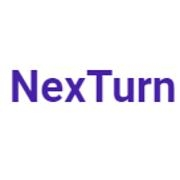
NexIDP
Data extraction, Document processing & Validation using GenAI
Refines complex data extraction with precision, providing global organizations with innovative automation tools to boost efficiency and stay ahead.
Document Processing GenAI PaidOverview
High-quality data extraction is a complex process that requires seamless coordination at every step. NexIDP is to refine this process with precision, continuously innovating to equip organizations globally with the tools to stay ahead. Our expertise empowers your business with the automation tools it needs to operate more efficiently and effectively.Features
- Ingest documents from multiple channels—mobile devices, email, shared folders, network scanners, and direct connections to business systems via API or pre-built connectors—ensuring seamless integration into your workflows, no matter how documents enter your organization. This flexibility empowers you to efficiently support diverse business processes, adapting to your specific needs and streamlining operations from every entry point.
- AI-powered image enhancement algorithms optimize each image for accurate data extraction. The AI corrects distortions and separates text from the background, cleaning up even the most complex and visually busy documents—such as IDs, birth certificates, and forms—to achieve reliable results and high straight-through processing rates.
- Uses advanced AI-based optical character recognition (OCR) and intelligent character recognition (ICR) technologies to digitize printed and handwritten text, preparing it for further processing. These technologies are able to recognize the logical structure of the whole document, including complex elements such as tables, enabling document classification, data extraction, and high-quality export to digital formats.
- Automate document classification and routing with AI classification models that analyze both text and image features through multimodal learning to recognize and organize documents. Once classified, documents are automatically assigned an AI extraction model for processing. By incorporating human-in-the-loop input, the models learn from user corrections and automatically adjust, continuously improving their performance over time.
- Extract data from structured, semi-structured, or unstructured business documents using advanced AI and machine learning that mimic human understanding. NexIDP reads and understands documents supports multi-linguistic and effortlessly handles complex tables, handwriting, checkmarks, barcodes, signatures, and more.
- Automatic validation cross-checks information against databases and ensures compliance with built-in validation rules. NexIDP catalyst gives you the flexibility to use pre-trained models and is currently hosted in the NSS Marketplace (NexTurn Solution Suite), tweak these ready-to-use models for the unique needs of your organization, or train custom models tailored to your specific documents.
- Keep refining your processes through human-in-the-loop (HITL) review, which lets subject matter experts step in to manually check and correct document classes as well as extracted data through a convenient interface. This optional step is crucial when 100% accuracy is required or when a document doesn’t meet the specific validation rules established for each AI model. Each time a correction is made, the AI models improve through continuous learning and get more accurate.
- The advanced quality analytics provided by NexIDP Document AI Agent provide a clear understanding of your document processing performance and track improvements in straight-through processing rates over time. With actionable insights and tailored recommendations, you can pinpoint the root causes of problems and take effective actions to improve data extraction quality of the models for superior business outcomes within your IDP workflow.
- Document AI Agent automatically exports data in the required format to meet your needs—whether JSON, CSV, XML, or others. The data is then sent seamlessly to your automation systems and business applications through simple REST API or pre-built connectors into your downstream processes.
Pricing
- Require a tailored pricing for your needs? Request a Quote